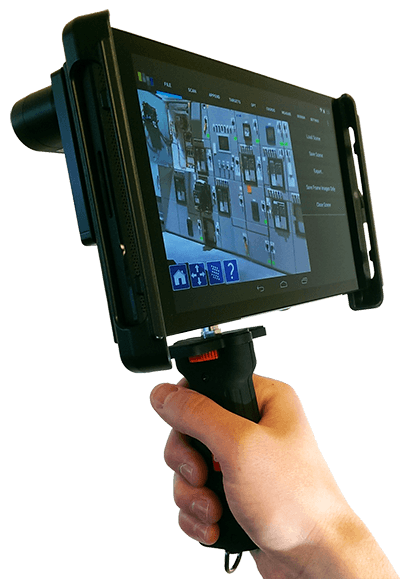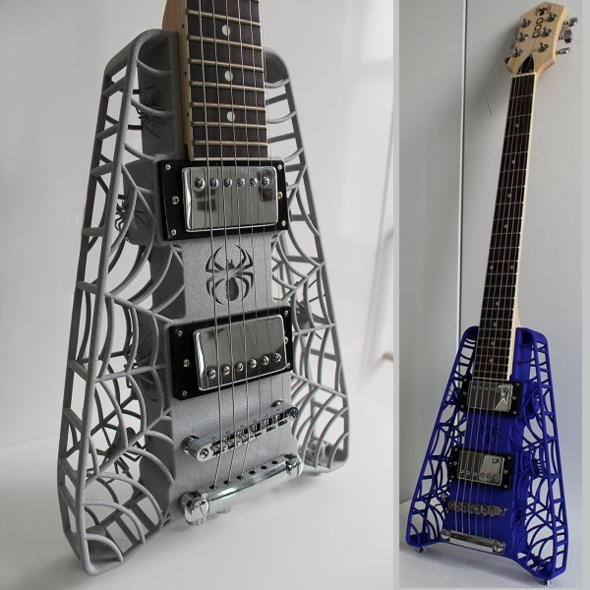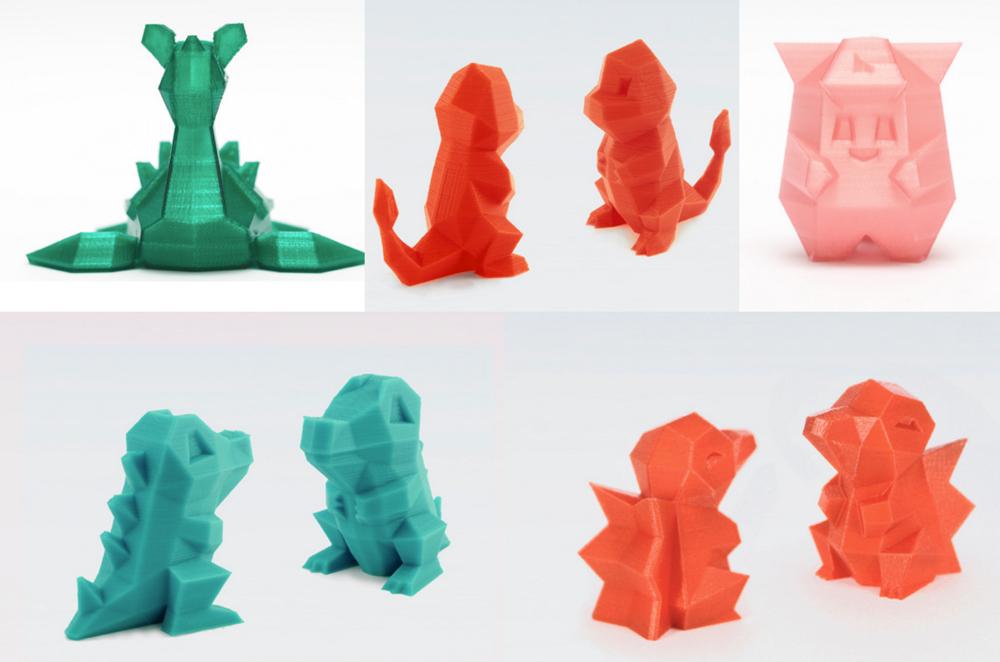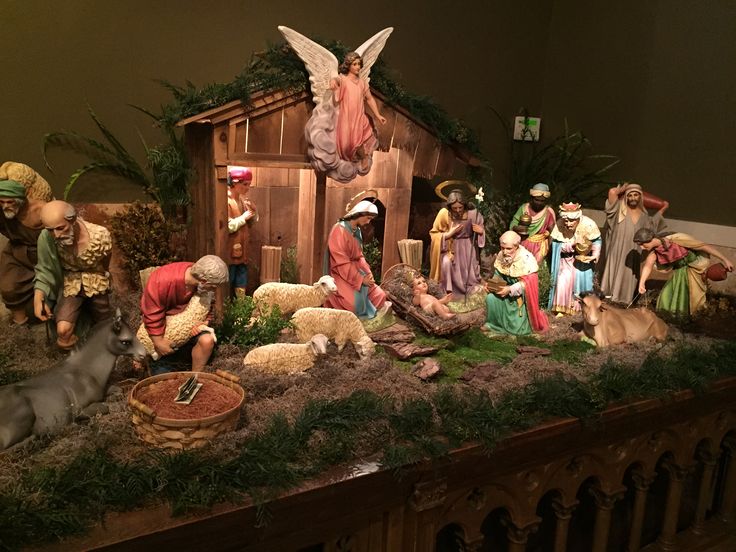Google blocks 3d print
Blocks: From 3D modeling in VR to 3D printing
Last month I took a VR story production workshop hosted by Wyatt Roy at Empowlabs (a cool digital XR makerspace in Boston). Wyatt drew from the history of film to show us what worked and what didn’t in VR.
He shared the workflow he used for Whisper Mountain: building elements in Blocks for use in Unity. It hadn’t occurred to me that VR could be used as a place to build VR assets. Brilliant. I was already playing with Blocks but I now had a new reason to spend more time with it.
What is Blocks?
Blocks is a modeling application offered by Google AR & VR and available on Vive and Rift.
The tool palette is very simple compared to Tilt Brush (another fantastic Google application) and the output is intentionally low poly. A great thing about Blocks is also the ability to publish models on Google Poly and to export them from there. So could I build a model in Blocks and 3D print it?
Exporting the Blocks model
I spent about 5 minutes in Blocks to create a model that wouldn’t be too challenging to print, yet interesting to hold in real life. I was imagining something about as big as a chess piece. I ended up with this:
Model from Blocks VR by Thomas Deneuville on Sketchfab
Neat.
As of today, Blocks offers the following export formats:
- OBJ
- FBX
- glTF
- triangulated OBJ
- USDZ
The Makerspace at Cornell accepts OBJ or STL so I went with OBJ. I have no idea what USDZ is, I need to look into that.
What it looks like
The result was satisfying. The surfaces were a bit ribbed but that’s because I was going for a quick prototype (it took about 40 min to print the 40 mm tall piece). It was exciting to see the shape that existed only in VR a couple of hours ago.
Final 3D printed model.Things to improve
Overall, I’m very satisfied with this process. A few things that could be better:
- My model was not laying flat and that had to be corrected in the printing software. It wasn’t a big deal but it means that I need to look more into snapping objects to the grid in Blocks.

- I haven’t found a way to get a sense of scale/dimensions in Blocks. I had to import the model to Fusion 360 to scale it up to the desired height. It can also be done when preparing the file for printing.
- I’ll try to print at a higher definition to see if I can achieve smoother surfaces. I might also import the model in Fusion 360 to finish sculpting it.
Posted in Learning, Project, XR and tagged 3D, Fusion 360, modelling, printing, VR
← Capacitive touch experiment: Triggering samples with fruitKristin Gutekunst on VR for good →
About Thomas Deneuville
Thomas is a creativity coach and mindfulness meditation teacher. Originally from France, he lives in Upstate, NY, with his family and a couple of bagpipes.
View all posts by Thomas Deneuville →
Services
© 2017-2022, Thomas Deneuville.
Thomas on Instagram
Create 3D Models Create 3D Models Resources
3D Modeling for Design
CAD Software- Tinkercad
- Onshape
- Fusion 360
- Sketchup
- SHAPR3D (iPad)
- Sculptura (iPad)
- Putty3D (iPad)
- UMAKE (iPad)
- MESHMIXER
- FreeCAD
- Solidworks
- Sculptura
- Vectary
“To create 3D models allows for creative thought and problem-solving in assignments where students develop new tools or products, and can be a collaborative activity that builds students’ teamwork skills.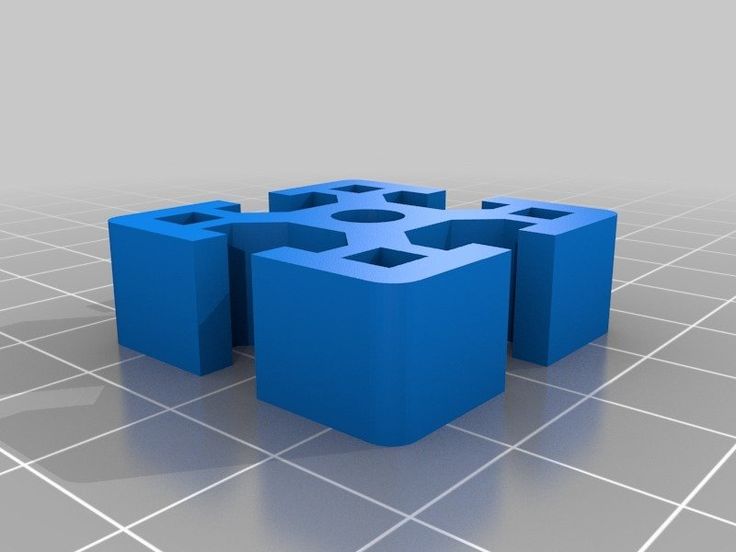 3D printing can be easily integrated into active learning, group work, and case-based learning.” – Excerpt from Yale Poorvu Center for Teaching and Learning
3D printing can be easily integrated into active learning, group work, and case-based learning.” – Excerpt from Yale Poorvu Center for Teaching and Learning
- CoSpaces – Promo Code: COSCreate3Dtrial
- Google Tilt Brush
- ShapesXR – Oculus Store
- Google Blocks
- Oculus Medium
- Sketchfab
- Unity
- Unreal Engine
- Tvori
- Gravity Sketch
- A-f
- A-Frame
- Autodesk Maya
- Blender
- WebVR
- XR.Plus
- 8th Wall
- Reality Composer
- Adobe Aero
“Virtual reality can be used to enhance student learning and engagement.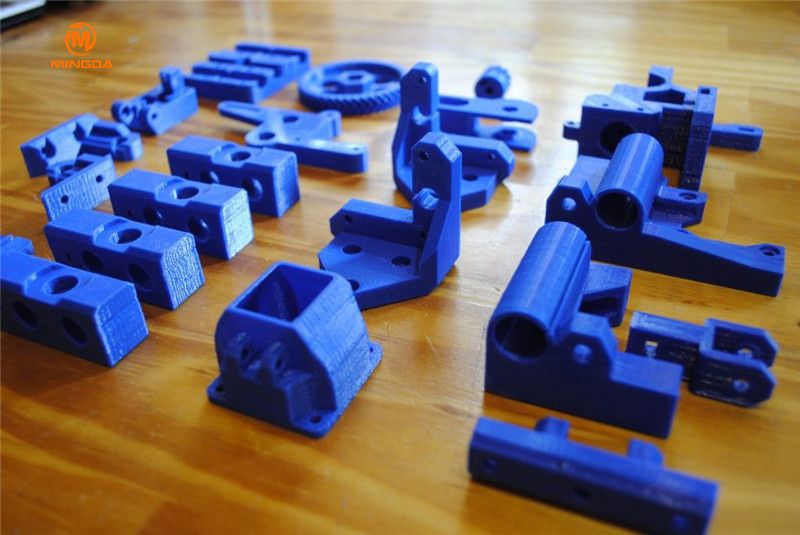 VR education can transform the way educational content is delivered; it works on the premise of creating a virtual world — real or imagined — and allows users not only see it but also interact with it. “ – Excerpt from Adobe XD Ideas
VR education can transform the way educational content is delivered; it works on the premise of creating a virtual world — real or imagined — and allows users not only see it but also interact with it. “ – Excerpt from Adobe XD Ideas
Codeblocks
Software- SCRATCH
- Tinkercad Blocks
- Google CS First
- CoSpaces
Trial Code & Discount
Merge Cube AR
- Merge Cube – Original
- Merge Cube – Print at home
Purchase Merge Cube
Website Hosting
- GetFlyWheel
Code Blocks are puzzle-piece shapes that are used to create code in Scratch. The blocks connect to each other vertically like a jigsaw puzzle. Series of connected blocks are called scripts.
Blocks are often easier to work with than text-based programming, as one has to memorize the commands typed and syntax errors may occur. However, text-based programming is more flexible, as blocks cannot be easily edited.
However, text-based programming is more flexible, as blocks cannot be easily edited.
– Excerpt from Scratch Wiki
FREE Educational Websites & Resources
Lesson Plans
- Ultimaker
- Dremel (MyStemKits included)
- Teacher’s Guide to Lessons and Curriculum
- Pinshape
- Tinkercad lessons
- Thingiverse Education
- Kathy Schrock’s Guide to Everything
- PrintLab
- CoSpaces Lessons
- Smithsonian 3D
Slicers & 3D Models
- Dremel Digilab
- Autodesk Print Studio
- Ultimaker Cura
- Thingiverse
- Pinshape
- MyMiniFactory
- Turbosquid
- Free3D
- Clara.io
- NIH 3D Print Exchange
- Smithsonian 3D
Recommended
- Merge Cube
- Cricut Maker
- Rosie Revere’s, Engineer
- Rosie Revere’s Big Project Book for Engineers
- Hello, World! Solar System
- Hello, World! Ocean Life
- Hello, World! Moon Landing
- Hello, World! Backyard Bugs
- Smithsonian Kids: Digging for Dinosaurs (Deluxe Multi Activity Book)
How to Teach Remotely
Communication Platforms
- Zoom
- Skype
- Google Meet
- Microsoft Teams
Organize Lessons & Connect
- Seesaw
- Google Classroom
- Class Dojo
- Wakelet
Record Videos
- Loom
- Screencastify
- Quicktime (mac)
Why mass 3D printing is still not a trend
Photo: asharkyu / Shutterstock, Chris McGrath / Getty Images
The production of goods with individual characteristics is one of the trends in the consumer market. However, personification has not yet become a popular phenomenon. Is this idea promising for business development?
However, personification has not yet become a popular phenomenon. Is this idea promising for business development?
When the problem of shortage of personal protective equipment (PPE) for doctors became acute, the owners of 3D printers united in the volunteer movement #3Dfor doctors. They began to print adapters, which made it possible to connect diving masks with virus-bacterial filters. Manufacturers were able to quickly develop and release adapters in various configurations for popular types of masks found in stores, quickly covered burning needs and saved many lives - and then began to make full-fledged protective masks and shields.
Adapters for masks - example of a customized product (made to order. - RBC Trends ), that is, adapted to different types of masks. How quickly manufacturers were able to design and release a new product with unique characteristics demonstrates the main advantages of 3D printing.
3D printing allows you to create products based on the preferences or personal characteristics of the buyer - personalized goods. This idea arose in the early 2000s, but so far, contrary to forecasts and the rapid development of additive technologies, has not become a mass phenomenon.
Personalization Challenges
Nike and Adidas have been experimenting with 3D printing for sneakers since 2012. The goal is to create sports shoes in the presence of the buyer according to the individual characteristics of his foot. For example, Adidas announced in 2015 that a consumer could walk into a store, spend a couple of minutes on the treadmill, and immediately receive a printed pair of running shoes that take into account the contours of the foot and pressure points while running. At the same time, Nike announced the possibility of printing shoes directly at the customer's home. To do this, you just need to download the file with the parameters of the sneakers and the characteristics of the foot from the corporation's website to your home 3D printer.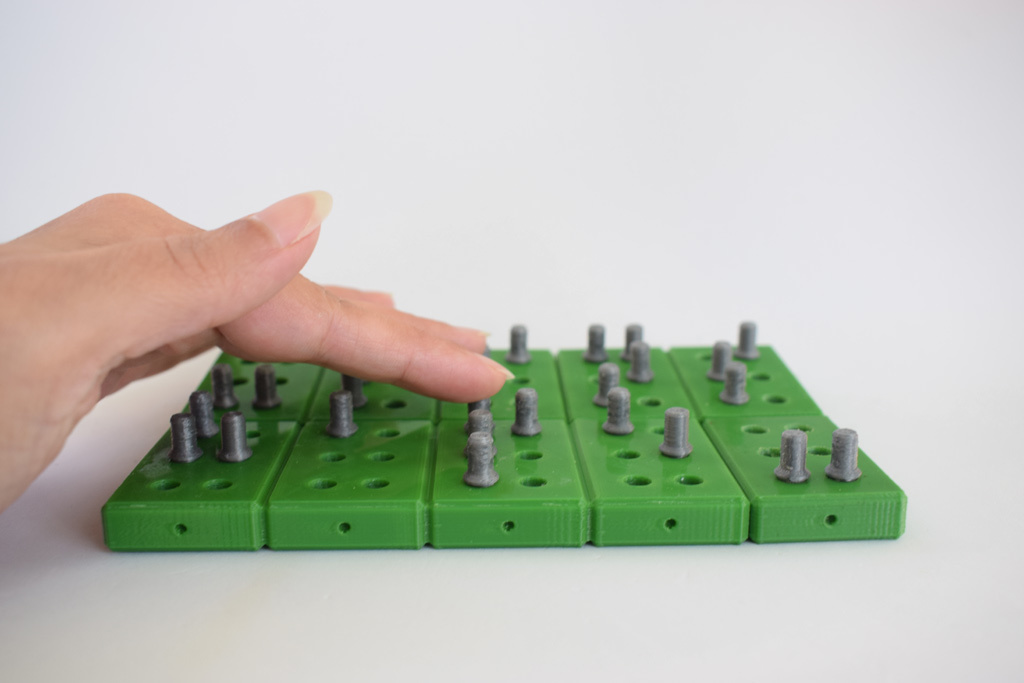
However, by 2020 these opportunities remained unrealized. In practice, everything turned out to be more difficult.
The point is the high cost of such products: the consumer is not ready to pay for customized sneakers many times more expensive when you can choose the right model from thousands of more affordable options.
Customization does not take root among automakers either. For example, in 2017, BMW launched the MINI Yours Customized service, which allows you to customize a new or previously purchased MINI car using decorative elements printed on a 3D printer. For example, it was possible to order individual side body inserts, trim parts, LED door sills and LED door projectors. However, the service is currently unavailable.
Where personification has taken root
So far, 3D printing is most actively used in medicine, where it is vital to take into account the individual characteristics of a person.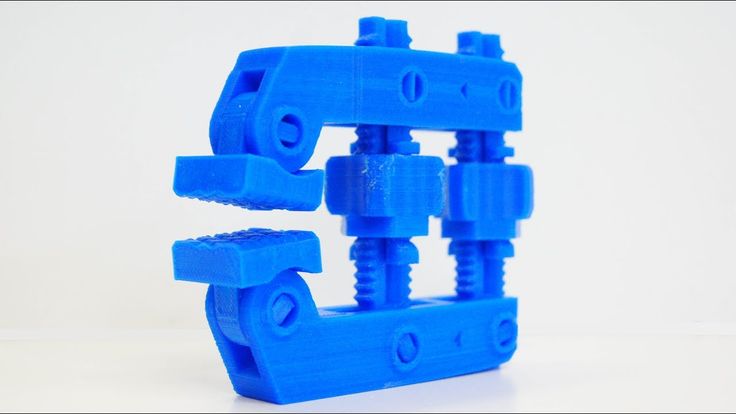 First of all, the technology is useful in orthopedics and dentistry for the manufacture of prostheses and implants. Customization is especially in demand in the production of prosthetic limbs. With the help of 3D scanning, the parameters of the patient are determined, a digital model of the prosthesis is created, which is printed on a 3D printer. In this case, you can create a unique design of the artificial limb. For example, they produce children's prostheses stylized as favorite movie characters.
First of all, the technology is useful in orthopedics and dentistry for the manufacture of prostheses and implants. Customization is especially in demand in the production of prosthetic limbs. With the help of 3D scanning, the parameters of the patient are determined, a digital model of the prosthesis is created, which is printed on a 3D printer. In this case, you can create a unique design of the artificial limb. For example, they produce children's prostheses stylized as favorite movie characters.
Another area where 3D printing is being used to customize products is in the jewelry and fashion jewelry industry. There are enterprises that produce mass products using 3D printing, for example, the American brands LACE, Nervous System and others. Customization is carried out, first of all, by small studios and workshops offering exclusive jewelry. They print digital models created according to customer sketches or cast them from precious materials using 3D printed molds.
Economics of innovation Living hand: who creates bionic prostheses in Russia
As for the majority of goods, the price works here in 99% of cases. Especially when the share of online sales is growing. You type in Google "buy a fountain pen is the cheapest" - and no matter where you are, you buy this fountain pen cheaper. This is where mass production wins.
You can think of many products that could be customized. But you need to be clear about who you will sell them to. Are there enough people willing to overpay for customization to keep your business alive? “In your calculations, you need to take into account real consumer demand, and not the desire to make money on hype,” says Vlasov. “The conclusion is simple: personalized production is possible when it will give approximately the same price as mass production.”
Denis Alekseev, Head of R&D and Production at JSC ROBBO (educational robotics, Skolkovo resident), is confident that personalized production will become a popular trend of the future.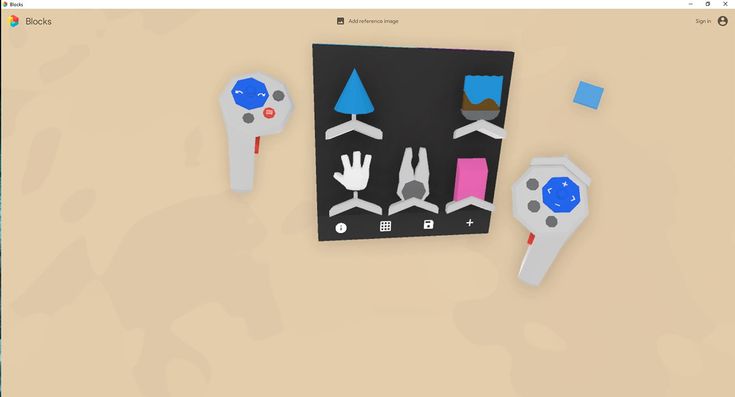 But in order to attract the mass consumer to this segment, it is necessary to overcome a number of technical and organizational issues. For the end user, the process of ordering a customized product should be as simple as possible: with a few steps, order what he wants, while receiving the finished product quickly and conveniently. The cost of individual products may be higher, but this increase must be of value to the customer.
But in order to attract the mass consumer to this segment, it is necessary to overcome a number of technical and organizational issues. For the end user, the process of ordering a customized product should be as simple as possible: with a few steps, order what he wants, while receiving the finished product quickly and conveniently. The cost of individual products may be higher, but this increase must be of value to the customer.
Main disadvantages of 3D printing:
-
low production speed;
-
often low quality products;
-
high cost of the product when trying to mass production.
How to reduce the cost of a customized product?
The cost of the finished product primarily depends on the materials for 3D printing. One way to cut costs is to produce consumables yourself.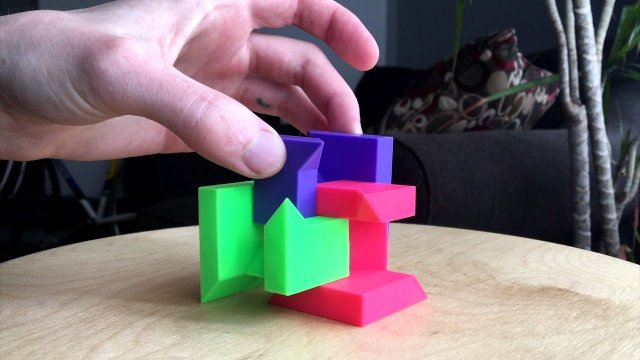
Another option to reduce the cost of consumables is possible with the development of additive technologies and the development of new printing materials.
The main question is: who will buy it?
Entrepreneurs will be able to develop the production of personalized goods if they find the answer to the question: who will buy them? Businesses that already operate in a particular market and feel the needs of their audience can feel the demand. It is almost impossible to guess - you need to be sure of the demand.
Artur Gerasimov notes that small-scale production is promising for business development using additive technologies. One of the areas of work of his company Innovax is the production of parts and mechanisms by order of industrial enterprises from the automotive industry, instrument making, and the aerospace industry.
A customization boom will occur when a customer can get a personalized product at the same price and as quickly as a mass product. Therefore, it is up to the development of technologies and services.
Therefore, it is up to the development of technologies and services.
Subscribe to the RBC Trends Telegram channel and stay up to date with current trends and forecasts about the future of technology, economics, education and innovation.
50 3D Printing Ideas
It looks like we're about to start drowning in useless stuff made for 3D printing projects. But you can do something that will really be useful! If you're running out of ideas, here's a list of 50 3D printable items you're unlikely to throw away.
Bag clip with screw cap
Now the bag clip will have a new feature - a hole with a lid for quick access, as in the photo. This clip is easy to print and convenient to use. Strange that no one thought of this before.
Author: Minkix
Download: Thingiverse
Modular Furniture Connector
This connector allows you to quickly assemble modular furniture. The default model is designed for 17×17 mm wood, but the size and material can be changed to suit your needs using a parametric file for customization.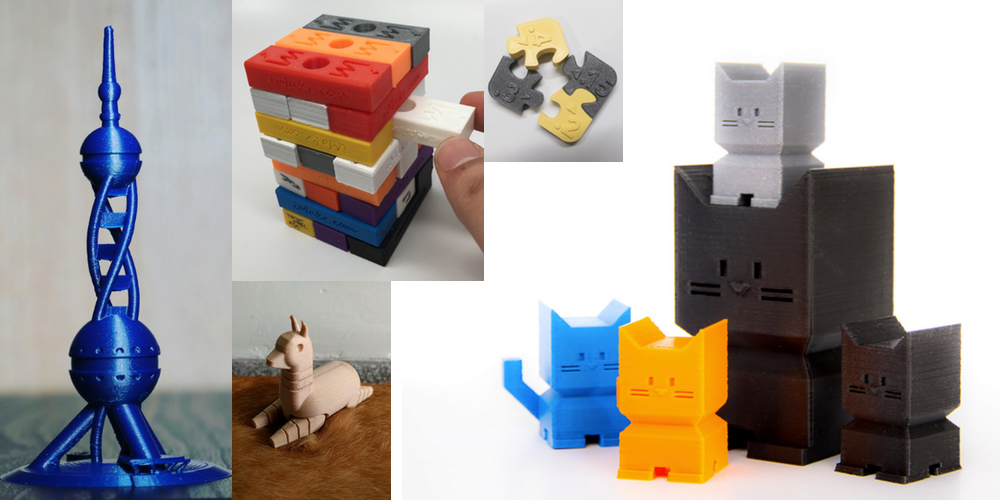
Creator: LeFabShop
Where to download: Cults
Sealant cap
No more throwing open sealant tubes away. The screw cap for the nozzle presses the o-ring tightly against the body of the tube and closes the access of air to the solvents inside.
Author: The-Mechanic
Where to download: Thingiverse
Laptop niche
Now the laptop will always be at hand, but hidden from prying eyes in a special niche that is attached to the bottom of any coffee table.
Author: Too Snide
Download: Thingiverse
Phone holder - Candice
Elegant and simple, perhaps the easiest thing you can print on a 3D printer.
Author: Clem.C2
Where to download: Cults
Polypanels
The idea for Polypanels came from Devin Montes. A polypanel is a series of three-dimensional building blocks. The individual elements of a Polypanel look simple, but if you print a lot of them and different types, you can create all sorts of complex designs. Something like LEGO where you can design each brick.
Something like LEGO where you can design each brick.
Creator: MakeAnything
Download: MyMiniFactory
Clothes Hook
This clothes hook is designed as an E3D nozzle and can be printed as many times as you need for all your clothes.
Author: Filar3D
Download: Cults
Plant Pot
This anatomical brain flower pot is easier to print than it looks, creator DrFemPop says. For assembly, it is only necessary to glue the parts after printing. It turns out an original house for plants.
Author: DrFemPop
Where to download: Cults
Door Holder
This is a simple solution for holding a door. Double-sided adhesive tape is sufficient for surface mounting.
Author: Akiraraiser
Where to download: Thingiverse
Piggy bank
A simple piggy bank for beginners, no complicated settings.
Author: lecaramel
Where to download: Thingiverse
Cable Ties
This tie is perhaps the simplest and most ingenious of all devices.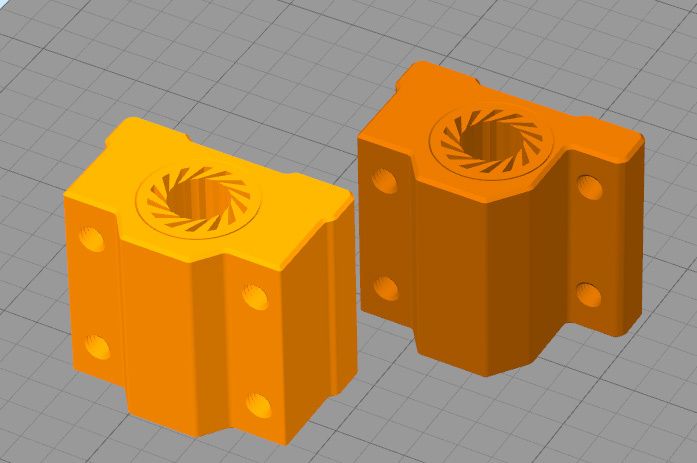 Clips are printed as a whole sheet at once, and then the required amount can be cut off from it.
Clips are printed as a whole sheet at once, and then the required amount can be cut off from it.
Author: Sunshine
Where to download: Cults
Roller ruler
An indispensable device if you need to measure the length of something non-linear: a piece of rope, a curved line, a perimeter with bends, etc. The ruler is called Geneva and has step 5 mm.
Author: MechEngineerMike
Where to download: Thingiverse
Forceps
This small solid piece of plastic can easily replace your pliers / pliers. These forceps take the force to the handles and redistribute it at the end of the grip. It's definitely pliers. Just smarter.
Author: BYU CMR
Where to download: Thingiverse
Cylindrical textured box
Beautiful tube from Syboulette decorated with hexagons. Well suited as a kitchen utensil for storing oatmeal, rice and other crumbly substances.
Author: Syboulette
Where to download: Cults
Door Stop
This stop is modeled after the Guyer Anderson cat statue in the British Museum. The design is hollow, which allows you to fill the limiter with something for additional weight.
The design is hollow, which allows you to fill the limiter with something for additional weight.
Author: Duaneindeed
Download: Cults
Plague Doctor Mask
Not exactly the most useful item on the list since bubonic plague is a thing of the past. But a mask can come in handy, for example, when you need to clean up after your pet. And you can also go to the carnival in it.
Author: Odrivious
Download: Cults
Universal Spool Holder
This adjustable spool holder uses a spring and an adjustable rewind clutch. It's the perfect place to store those pesky wires.
Who made it: Vincent Goenhuis
Where to download: Thingiverse
Sturdy waterproof box
This tight-fitting box will keep things from getting wet. Print it in PLA or PETG, add a flexible TPU seal and M3 screws for the spring hinge, and you're done.
Author: ZX82
Where to download: Cults
Dice
This dice is suitable for flat 3D printing and has a face size of 16mm.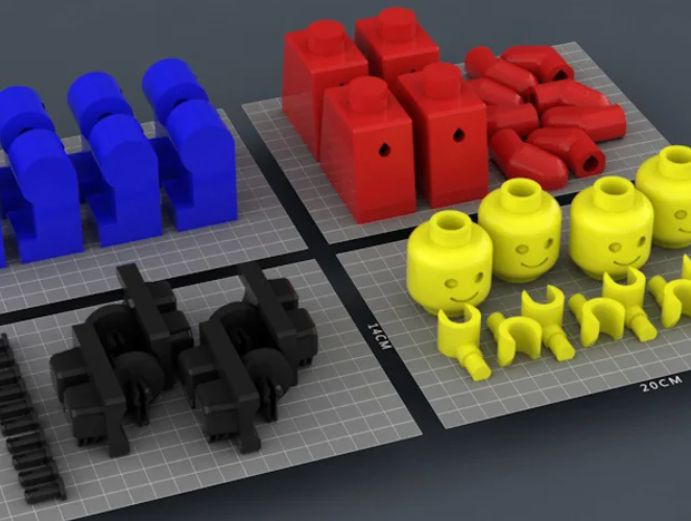
Author: Devin Montes (MakeAnything)
Where to download: MyMiniFactory
Collapsible Coat Rack
Really cool coat rack. That's all there is to say about her.
Author: Komaru
Where to download: Thingiverse
Business Card Holder
Great for showing off your new business cards to your Wall Street friends. What could be more delightful than this Zippo card holder with flip-top lid.
Author: PentlandDesigns
Where to download: Cults
Pencil and pen holder
Iceberg or melting beehive? Be that as it may, this is a handy pen and pencil holder that is cheaper to print than to buy.
Author: BeeVeryCreative
Where to download: Cults
Groovi Monster Audio Amplifier
This is a passive smartphone audio amplifier that looks stylish and does the job well. It's called Groovi Monster for a reason.
Author: 3DShook
Where to download: Cults
Cup holder
Can be used not only as a cup holder, but also as a coaster for hot dishes.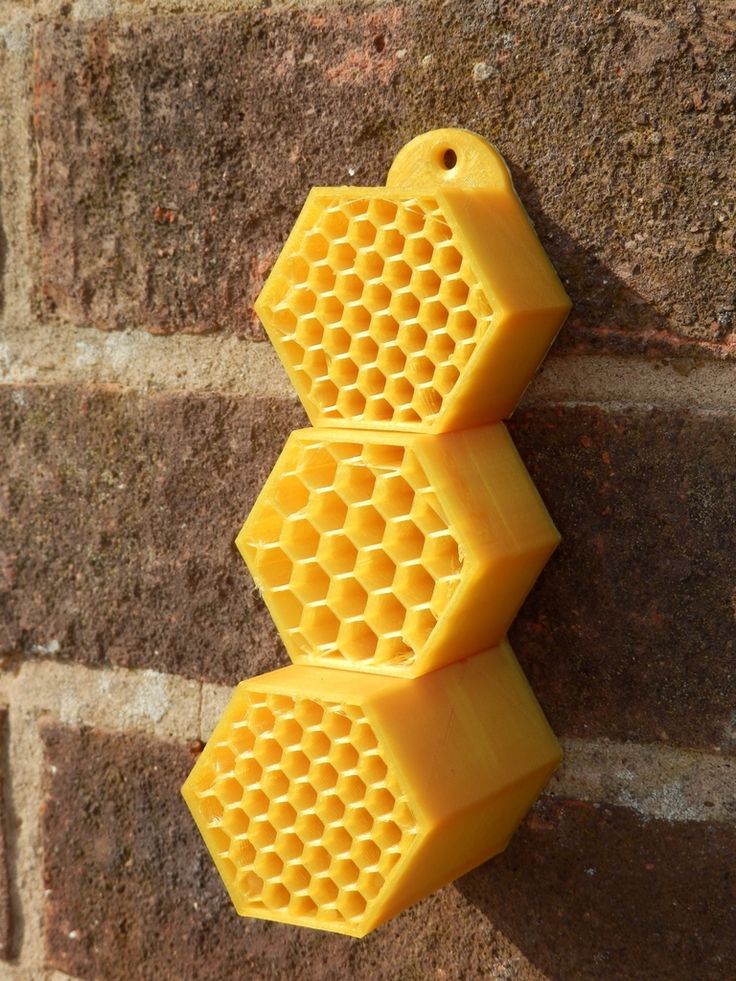 The dimensions of the template are easily adjusted to suit any size cookware.
The dimensions of the template are easily adjusted to suit any size cookware.
Author: jmdbcool
Where to download: Thingiverse
Clamp
Designed for fixing various materials, including the ends of the wire in the coil. Also great as a clothespin replacement.
Author: Med
Where to download: Cults
Pencil box
Suitable for storing all your desk trivia and trinkets (memory cards, rubber bands, pencils, paper clips, etc.).
Author: Monkey3D
Where to download: Cults
Headphone holder
This is a duck. Yes, you can hang headphones on it.
Author: Toshi_TNE
Download: Thingiverse
Polyhedral Succulent Pot
Unusual geometric pots for your growing succulent collection. These small pots can be configured to be connected together.
Author: PrintFutura
Download: Cults
Survival whistle
This is a survival whistle with original design. It is durable, easy to make and very loud (118 dB is more than enough to be heard in an emergency).
It is durable, easy to make and very loud (118 dB is more than enough to be heard in an emergency).
Author: Joe Zisa
Where to download: Thingiverse
Measuring cube
A simple and original measuring cube for the kitchen. On each side there are recesses for measuring the volume of ingredients (in cups - according to the American system, and in metric units for everyone else). It is best to print with PETG material, it is the safest for products.
Author: iomaa
Where to download: Thingiverse
Hinge
This is a parametric hinge that can be sized to suit specific needs.
Written by Rohin Gosling
Where to download: Thingiverse
Car Eyeglass Holder
Attaches to your car's sun visor. Glasses will always be at hand.
Author: Trevor Long
Download: Thingiverse
Opener
The simplest things are usually the most useful. Convenient and easy to print opener. Covers the sharp edges of the cork as much as possible, protecting you from injury.
Covers the sharp edges of the cork as much as possible, protecting you from injury.
Author: Jeremy Peterson
Download: Thingiverse
Superhero Keychains
Sometimes you need to remind yourself of your hidden superpowers. Stylish and cool keyrings are well suited as a small gift.
Author: Formbyte
Where to download: Cults
Headphone stand
It will be useful for music lovers and gamers who use headphones a lot and often. After all, now they will no longer roll around anywhere.
Author: MakerBot
Where to download: Thingiverse
Bag Clip
The model consists of two printed parts. Allows you to keep packages closed and keep food fresh longer.
Author: Walter Hsiao
Download: Thingiverse
Plastic wrench
Handy wrench, but don't choose soft plastic to make it.
Author: Daniel Noree
Where to download: Cults
Sliding Decal
No more worrying about whether cups are clean or dirty right now in the dishwasher! With the help of a special mechanism, the slider easily changes the inscription on the plate.
Who made it: MiddleFingerBoss
Where to download: Thingiverse
Collapsible basket
Cool picnic item. A folding square basket with five sections is printed from several parts and then glued together. For product safety, it is recommended to use PETG plastic.
Author: PatternToPrint
Where to download: Cults
Self-watering plant pot
Houseplants are dying from your forgetfulness? This will not happen again! This pot will water them by itself, and your conscience will be clear. 9Cults But if you present them in such a gift box, your friend will surely like it. The lucky recipient will have to work hard to get to the prize, because there is only one right way.
Author: Robert
Where to download: Thingiverse
Wired headphone holder
The headphones will now be protected from tangling and breakage.
Author: Robert
Where to download: Thingiverse
Tube Squeezer
Helps squeeze out the contents of the tube to the last drop. Wide enough to fit most tubes on the market. Printed in three separate parts.
Wide enough to fit most tubes on the market. Printed in three separate parts.
Author: Justin Otten
Where to download: Thingiverse
Webcam Shutter
The best thing for the paranoid and just for those who are uncomfortable being under the gun of a webcam. Instead of sticking tape or sticky tape over the lens, attach a slider shutter to the body and open it when you need a video call.
Author: Horizon Lab
Where to download: Cults
Hexagonal Prefabricated Drawers
Comes in handy to free the table from the noodles of cables, wires and just every little thing. The design can be easily expanded if necessary.
Created by Dan O'Connell
Where to download: Cults
Wall Phone Shelf
Attach the shelf to a power outlet and place your phone on it while charging. The model also has a corner slot that holds your smartphone or tablet upright for watching videos.
Author: Tosh Sayama
Where to download: Cults
Card Shuffle Machine
Awesome item for poker lovers.





